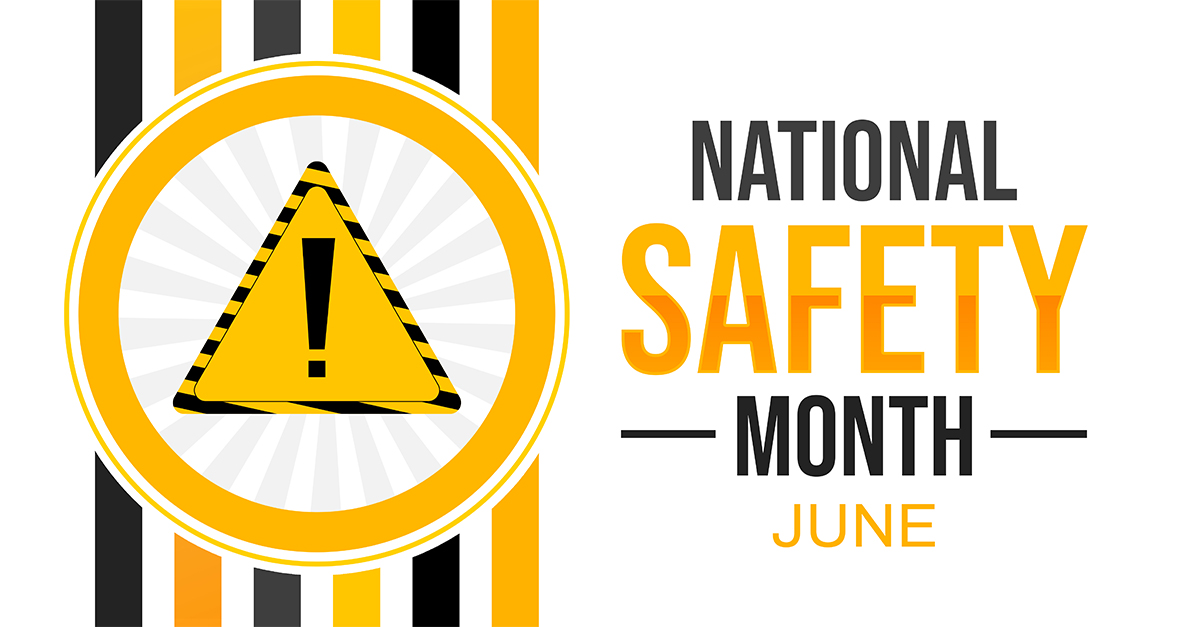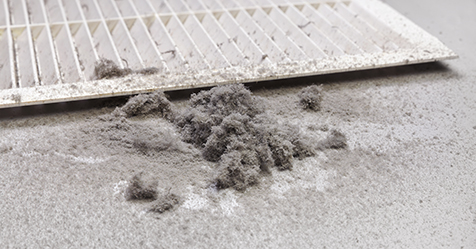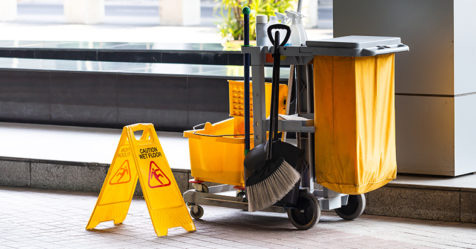June is National Safety Month, the annual observance established by the National Safety Council in 1996 to help protect employees in the workplace.
Safety is a crucial issue for cleaning professionals and facility managers, who want to keep their workers and building tenants protected and healthy. Every day, cleaning workers risk exposure to biohazards and chemical hazards, as well as physical injuries from daily vacuuming, repetitive motions, frequent bending, and prolonged standing. Another big concern for cleaning workers and facility managers today is crime in the workplace.
To ensure workplace safety, facility managers can collaborate with crime prevention and risk management experts to develop comprehensive emergency preparedness programs. The programs should address various scenarios—such as workplace violence, daytime/nighttime burglaries, and natural disasters such as tornados or earthquakes—and include clear protocols on how to manage each situation. These programs must also educate building users on evacuation and lockdown procedures.
As crime and violence are always evolving, working with crime mitigation experts will help managers stay several steps ahead in keeping building users safe. When it comes to facility safety, be proactive. Reactive is too late.
For a comprehensive understanding of how cleaning professionals can protect themselves and promote safety, I spoke with experts in the commercial cleaning, jansan distribution, facility management, and security industries. Consider their thoughts, tips, and suggestions for ensuring workplace safety, during National Safety Month and every month.
Lift with care
Tips from Michael Wilson, CEO and president of AFFLINK, a distributor-member organization
The recent shift from just-in-time ordering (smaller but more frequent orders) to bulk purchasing (large orders of supplies purchased at one time) means workers are moving numerous heavy boxes in bulk orders, increasing their risk of injuries to the spine, wrists, and elbows. To protect workers, we have been developing what we refer to as the APPL approach to lifting.
The APPL approach—focusing on assessing, proper form, positioning, and lifting—offers a structured way to minimize injury risks. Our distributor members who learn this approach can pass it along to their cleaning contractors and building managers.
By implementing this lifting method, we protect workers’ physical well-being and also demonstrate a proactive commitment to worker safety.
Incorporate safety into green cleaning
Tips from Steve Ashkin, CEO and founder of The Ashkin Group, a consulting firm working to green the professional cleaning industry
Many cleaning professionals and facility managers believe they no longer need to be concerned about hazardous chemicals once they have transferred to environmentally preferable cleaning solutions and supplies. That thinking is over simplistic.
Embracing green products is a significant first step toward protecting the health of workers, building inhabitants, and the environment. But green cleaning involved more than switching your cleaning products. It’s a process, a comprehensive approach to cleaning that differs from the ways facilities were cleaned using conventional cleaning solutions.
Proper training on using green cleaning solutions is mandatory for safety. For example, these products are often highly concentrated, so cleaning workers must learn the proper dilution ratios. Improperly diluted cleaning solutions are not only wasteful, they can leave surfaces such as floors slippery, increasing the risks of a slip-and-fall accident.
Proper green cleaning also involves assessing the specific cleaning needs of each facility area. Staff must determine where disinfectants are necessary and where green sanitizers and all-purpose cleaning solutions will suffice. The goal of green cleaning is to minimize the impact of cleaning on the worker and the environment, which means using the least impactful cleaning solution that will best address the cleaning needs of each facility area.
Protect workers with training and PPE
Tips from William Mattos, entrepreneur with more than 30 years of experience in the cleaning industry
The importance of personal protective equipment (PPE) for cleaning workers—such as disposable gloves, protective clothing, goggles/safety glasses, and appropriate footwear—cannot be overstated. PPE is essential for safeguarding workers from various risks, including exposure to harmful chemicals and biohazards as well as slip-and-fall accidents.
Employers are responsible for providing their workers with the necessary PPE and training them how to use it. They are also responsible for training staff to properly use cleaning chemicals to avoid injuring themselves or damaging surfaces.
Ensure all cleaning chemicals are in properly labeled containers that list the product ingredients, instructions for product use, and warnings about noncompatible surfaces. It is best to have workers coordinate product use with their supervisor, to make sure they are using the correct product for each surface.
Unleash the power of prevention
A key theme that resonates in all these insights and tips is the power of prevention. By identifying risks and taking proactive steps to introduce safety measures tailored to these risks, we can significantly enhance safety for workers in the cleaning industry.
Let’s take some time during National Safety Month this June to review the safety measures in our workplaces. By doing so, we’re protecting not only ourselves but also our coworkers and their families and signaling that their safety is our top priority.




